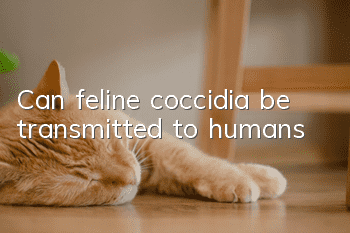How do cats give birth? Tips for giving birth to a cat!

Cats have many things to pay attention to when giving birth. How much do you know about the care from prenatal to postpartum? The following editor will tell you how cats give birth and what to pay attention to!
1. Prenatal preparation
One week before the expected delivery date, the owner should prepare the birth box or nest for the cat, and place it in a warm, dark, and quiet place to avoid being caught off guard by the early delivery date.
The birthing box can be made of wooden boards or can be replaced by cardboard boxes. The specifications are 50 cm long, 40 cm wide and 30 cm high. Generally, the cat’s limbs can be straightened and there should be a certain gap. . The door of the birthing box should have a threshold of 7 to 8 centimeters high to prevent the kittens from running out.
The inner surface of the birthing box should be smooth, without exposed nails or other sharp protrusions to avoid scratching the mother cat and kittens. The birthing box should not be painted with paint or other coatings to avoid adverse odors to the cat or poisoning caused by licking and biting the kitten.
The bottom of the birthing box should be paved with insulation materials such as cotton wool and cloth. However, hay and other materials should not be used, because the kittens will run around in the box after birth to avoid getting into debris and not being discovered by the mother cat. Crushed to death, or other accidents occurred. In winter, you need to lay more paving, and you can also use hot water bottles or light bulbs to keep it warm. In summer, attention should be paid to ventilation and cooling of the farrowing box.
It is best to place the farrowing box in a dark, dry place that is warm in winter and cool in summer. Bricks can also be used to raise the box to facilitate ventilation. The top cover of the birthing box is best made into a loose-leaf type, which can be opened at any time to observe the living conditions of the mother cat and her cubs.
Before giving birth, wash and dry the female cat’s nipples with warm salt water to ensure that the puppies can eat colostrum smoothly and hygienically. Before giving birth, female cats should also prepare towels, scissors, disinfectants, warm water, etc. in case of difficult labor.
2. Childbirth
A few days before the expected date of delivery, it is necessary to observe the female cat at any time, detect the signs of labor in time, and make preparations and care for delivery. As delivery approaches, the pregnant cat moves less and less and frequently licks its abdomen and around the external genitalia.
The abdomen of pregnant cats is obviously enlarged and drooping, the nipples are clearly visible, and sometimes milk flows out. At this time, pregnant cats are nervous and can easily attack other animals and people. On the day of delivery, female cats generally do not eat and hide in the delivery room and do not come out. Therefore, the female cat who is about to give birth suddenly stops eating without the interference of disease. This is an important sign before delivery. 12 to 24 hours before delivery, body temperature drops by about 1°C.
A few hours before giving birthAt this time, the female cat's uterus begins to contract. The female cat feels uncomfortable during labor pains, and her spirit becomes restless. She stays in the birthing box and refuses to come out. Some female cats will lie down on their side and breathe rapidly. Cats may drink large amounts of water between contractions. If you find mucus flowing out of your vagina, it means you are about to give birth. If the cat is not in the birthing box at this time, you should put the cat into the birthing box as soon as possible and stroke it gently until its mood stabilizes. Then let it stay alone in the birthing box. It is forbidden to watch it frequently, and it is not allowed to touch it.
Cat labor generally lasts 1 to 3 hours, mainly determined by the number of litters.
Under normal circumstances, a female cat can handle all matters during the birth process by herself according to her maternal instinct, without the help of others. But domestic cats, especially those of expensive breeds, sometimes need help from their owners. Therefore, during the delivery process, the owner can watch quietly and deal with problems promptly, but do not make any noise. The less people move around, the better, especially strangers. It is very important whether the first kitten can be delivered naturally during childbirth. If it is delivered naturally, dystocia will generally not occur during the entire delivery process.
When giving birth, the female cat lies on her side. More mucus flows out of the vagina to increase the lubrication of the birth canal and speed up the delivery process. When the fetus is about to be delivered, you will first see the vulva bulging out, and then a white film wrapping the fetus inside. The head is usually produced first, with the claws placed on both sides of the head, and then the body and tail are produced. The born kittens are wrapped in the afterbirth, and then the mother cat tears open the afterbirth sac, bites off the umbilical cord, eats the afterbirth and placenta, and licks the amniotic fluid and mucus in the nose of the kittens with her tongue. Sometimes you can also see The mother cat seems to be "beating" the kitten. This is stimulating the kitten's circulation and respiratory system, which is normal.
When the first kitten is born, the second fetus will be delivered at an interval of 0.5 to 1 hour. The mother cat will usually move away from the first kitten. The owner also needs to observe the entire process of the second fetus' delivery to prevent the mother cat from pressing or harming the delivered kitten. Generally, after giving birth to 3 to 4 kittens, if the mother cat is no longer seen for an hour, it means the delivery is over. At this time, the female cat is very tired. Let her have a good rest without disturbing her. Sometimes she can also be given a small amount of milk or warm sugar water to drink.
Cats can also have dystocia, which requires experienced people to assist in delivery.
If the baby is born head first, this is a natural delivery position. Some cats may have dystocia due to physical weakness and insufficient labor force. At this time, traction can be used to assist the delivery. One person grabs the female cat's shoulder, and the other person pads the exposed fetal part with gauze, and returns it to the pelvic cavity about 1 cm; then gently turns the fetal body, and then carefully pulls it outward while the female cat is struggling. Under normal circumstances, fetal light can be produced smoothly.
For breech dystocia, one person should hold the female cat’s head, and the other person’s left hand should gently press the female cat’s abdomen and waist, and the thumb and ring finger of the right hand should remove the amniotic membrane.Gently press the fetus's hind legs, then put your index and middle fingers on the kitten's back, and bend the fetus's body toward the abdomen into a shrimp shape, so that the fetus can be delivered smoothly. If the two front paws come out first, you can use your index finger and middle finger to probe into the birth canal, hold the fetus's chest, and take advantage of the mother cat's intermittent efforts to deliver the fetus into the womb. Position and give birth smoothly.
During midwifery, movements should be gentle and steady, and patient and meticulous to prevent injury. The fetus must be returned when the mother cat stops working hard, and the fetus must be pulled out slowly as the mother cat works hard. If the fetus is still difficult to deliver after assisted delivery, caesarean section should be considered.
When a cat gives birth, you should pay attention to the following things:
First, the childbirth must be kept quiet and dark to prevent the cat from being overly nervous and causing dystocia. During observation, if it is found that the fetus is still not delivered 15 to 24 hours after the pregnant cat's water breaks, or the fetus has been exposed to the vagina for 5 minutes and still cannot be fully delivered, it means that the female cat has dystocia and requires assisted delivery. If necessary, consider caesarean section.
Second, during the delivery process, the number of placenta must be counted. It is usually expelled immediately after the fetus is born and eaten by the female cat. If the placenta is retained, the consequences will be serious. If not discovered and treated in time, it may become infected, corrupted, and even endanger the life of the female cat.
Third, there will be a small amount of bleeding when the female cat gives birth. If there is bright red excrement flowing out of the vagina after delivery, it indicates that the birth canal will be bleeding. At this time, the vagina should be plugged with absorbent cotton and sent to a pet hospital (or Veterinary Station) diagnosis and treatment.
- Are there any side effects of taking catamine for a long time? Is it good for cats to take catamine?
- How to make a cat an excellent pick-up cat? Cat training!
- What to do if your cat has kidney failure?
- Your cat can get depression too
- What should I do if my exotic shorthair cat can’t poop in the litter box?
- Will a cat's teeth grow back if they are broken?
- What are the signs that a cat hates another cat?
- Notes on clinical medication for cats and things about pets!
- What breeds of big-faced cats are there? How to choose a big-faced cat breed!
- Do cats suffer from post-holiday syndrome? The main symptoms are anorexia, picky eating, depression, etc.



